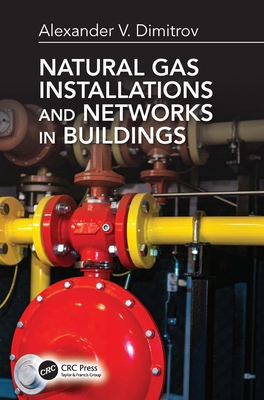Heating, Cooling, Lighting: Sustainable Design Methods for Architects, 4/e (Hardcover)
暫譯: 加熱、冷卻、照明:建築師的可持續設計方法,第4版(精裝本)
Norbert Lechner
- 出版商: Wiley
- 出版日期: 2014-10-13
- 售價: $5,860
- 貴賓價: 9.5 折 $5,567
- 語言: 英文
- 頁數: 912
- 裝訂: Hardcover
- ISBN: 111858242X
- ISBN-13: 9781118582428
無法訂購
買這商品的人也買了...
-
 CCD/CMOS 影像感測器之基礎與應用
CCD/CMOS 影像感測器之基礎與應用$350$315 -
 深入淺出 Java 程式設計, 2/e (Head First Java, 2/e)
深入淺出 Java 程式設計, 2/e (Head First Java, 2/e)$880$695 -
 Ubuntu 作業系統入門與實務
Ubuntu 作業系統入門與實務$490$387 -
 Cloud Computing: Principles and Paradigms (Hardcover)
Cloud Computing: Principles and Paradigms (Hardcover)$5,460$5,187 -
 Professional jQuery (Paperback)
Professional jQuery (Paperback)$1,680$1,596 -
 Microsoft SQL Server 2012 T-SQL Fundamentals (Paperback)
Microsoft SQL Server 2012 T-SQL Fundamentals (Paperback)$1,930$1,834 -
 物聯網核心技術、原理與應用
物聯網核心技術、原理與應用$500$475 -
 物聯網概論 (The internet of things)
物聯網概論 (The internet of things)$500$395 -
 Rhino 4 造型設計實戰演練
Rhino 4 造型設計實戰演練$580$493 -
 透視 C語言指標-深度探索記憶體管理核心技術 (Understanding and Using C Pointers)
透視 C語言指標-深度探索記憶體管理核心技術 (Understanding and Using C Pointers)$480$379 -
 iOS 7 Programming Pushing the Limits (Paperback)
iOS 7 Programming Pushing the Limits (Paperback)$1,830$1,739 -
 Android 3D 遊戲開發完全學習手冊─你我都能開發硬體加速的商業版 Android 3D 遊戲
Android 3D 遊戲開發完全學習手冊─你我都能開發硬體加速的商業版 Android 3D 遊戲$680$578 -
 Evolutionary Algorithms for Mobile Ad hoc Networks (Hardcover)
Evolutionary Algorithms for Mobile Ad hoc Networks (Hardcover)$3,250$3,088 -
 Satellite Networking: Principles and Protocols, 2/e (Hardcover)
Satellite Networking: Principles and Protocols, 2/e (Hardcover)$4,700$4,465 -
 徹底研究 Hadoop 實戰分析
徹底研究 Hadoop 實戰分析$720$612 -
 $534Erlang 程序設計, 2/e (Programming Erlang: Software for a Concurrent World, 2/e)
$534Erlang 程序設計, 2/e (Programming Erlang: Software for a Concurrent World, 2/e) -
 JavaScript and JQuery: Interactive Front-End Web Development (Paperback)
JavaScript and JQuery: Interactive Front-End Web Development (Paperback)$1,640$1,558 -
 Raspberry Pi 最佳入門與實戰應用-深入 Raspberry Pi 的全方位指南(附87段教學與執行影片/範例程式檔)
Raspberry Pi 最佳入門與實戰應用-深入 Raspberry Pi 的全方位指南(附87段教學與執行影片/範例程式檔)$450$356 -
 無印良品成功 90%靠制度
無印良品成功 90%靠制度$300$255 -
 3D 列印的概念、原理和應用:完整認識即將改變世界的新製造科技
3D 列印的概念、原理和應用:完整認識即將改變世界的新製造科技$280$238 -
 初探 NFC:近距離無線通訊與 Arduino、Android 和 PhoneGap (Beginning NFC: Near Field Communication with Arduino, Android, and PhoneGap)
初探 NFC:近距離無線通訊與 Arduino、Android 和 PhoneGap (Beginning NFC: Near Field Communication with Arduino, Android, and PhoneGap)$500$395 -
 Human Factors in Lighting, 3/e (Paperback)
Human Factors in Lighting, 3/e (Paperback)$4,200$3,990 -
 完全掌握 After Effects & Premiere Pro 最重要的 12 堂課
完全掌握 After Effects & Premiere Pro 最重要的 12 堂課$780$663 -
 Fundamentals of Lighting, 2/e (Paperback)
Fundamentals of Lighting, 2/e (Paperback)$2,782$2,643 -
 Residential Lighting: A Practical Guide to Beautiful and Sustainable Design, 2/e (Hardcover)
Residential Lighting: A Practical Guide to Beautiful and Sustainable Design, 2/e (Hardcover)$3,030$2,879
相關主題
商品描述
Heating, Cooling, and Lighting is the industry standard text on environmental control systems with the emphasis on sustainable design. By detailing the many factors that contribute to the comfort in a building, this book helps architects minimize mechanical systems and energy usage over the life of the building by siting, building design, and landscaping to maximize natural heating, cooling, and lighting. This new fourth edition includes new information on integrated design strategies and designing for the Tropics. Resources include helpful case studies, checklists, diagrams, and a companion website featuring additional cases, an image bank, and instructor materials.
Designing buildings that require less energy to heat, cool, and light means allowing the natural energy of the sun and wind to reduce the burden on the mechanical and electrical systems. Basic design decisions regarding size, orientation, and form have a great impact on the sustainability, cost, and comfort of a building. Heating, Cooling, and Lighting provides detailed guidance for each phase of a design project. Readers will:
- Understand the concept of sustainability as applied to energy sources
- Review the basic principles of thermal comfort, and the critical role of climate
- Learn the fundamentals of solar responsive design, including active and passive solar systems as well as photovoltaics
- Discover how siting, architectural design, and landscaping can reduce the requirements for mechanical and electrical systems
In sustainable design, mechanical, and electrical systems should be used to only accomplish what the architect could not by the design of the building itself. With this in mind, designers require a comprehensive understanding of both the properties of energy and the human factors involved in thermal comfort. Heating, Cooling, and Lighting is the complete, industry-leading resource for designers interested in sustainable environmental control.
商品描述(中文翻譯)
透過建築設計實現可持續的環境控制
暖通空調與照明是環境控制系統的行業標準文本,重點在於可持續設計。這本書詳細說明了影響建築舒適度的多種因素,幫助建築師通過選址、建築設計和景觀設計來最大化自然的加熱、冷卻和照明,從而減少機械系統和能源使用。這一新版的第四版包含了有關綜合設計策略和熱帶地區設計的新資訊。資源包括有用的案例研究、檢查清單、圖表,以及一個伴隨網站,提供額外的案例、圖像庫和教學材料。
設計需要較少能源來加熱、冷卻和照明的建築意味著允許太陽和風的自然能量減輕對機械和電氣系統的負擔。關於大小、方向和形狀的基本設計決策對建築的可持續性、成本和舒適度有著重大影響。暖通空調與照明為設計項目的每個階段提供詳細的指導。讀者將會:
- 理解可持續性在能源來源中的概念
- 回顧熱舒適的基本原則及氣候的關鍵角色
- 學習太陽能響應設計的基本原則,包括主動和被動太陽能系統以及光伏技術
- 發現選址、建築設計和景觀設計如何減少對機械和電氣系統的需求
在可持續設計中,機械和電氣系統應僅用於完成建築設計本身無法實現的功能。考慮到這一點,設計師需要全面理解能源的特性以及與熱舒適相關的人因因素。暖通空調與照明是對於有興趣於可持續環境控制的設計師來說,完整且領先行業的資源。











